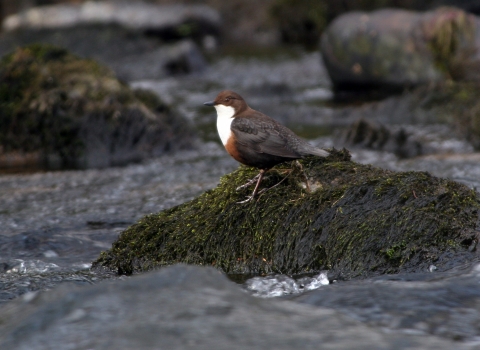
Sparrowhawk - Jon Hawkins (Surrey Hills Photography)
Location
Know before you go
Dogs
Visit the 'Dog walking on reserves' page in the Contact section for more information.
When to visit
Opening times
Open at all timesBest time to visit
April to JulyAbout the reserve
The mature woodland here is predominantly Beech and Oak and with some impressively large and ancient trees, Some of the largest Beech trees grow on the old hedge banks which line the ancient drove road. There are also several, small, areas of heathland flora.
Dommett Wood is the site of one of the Trust’s biggest replanting projects. In 2005, 2.5 hectares of wildlife-unfriendly conifers were felled and replaced with native broadleaved species, including Oak, Ash, Wild Cherry and Rowan. A side effect of the work has been opening up a stunning view across the county from this eastern fringe of the Blackdown Hills. Landmarks such as Beer Hill, Glastonbury Tor and Cadbury Castle are visible on a clear day.
Considerable amounts of standing and fallen dead trees have been left on purpose, as dead trees are very much part of what you find in natural woodlands. Dead wood is home to lots of fungi and many types of insect live in or eat dead wood. Honeysuckle clambers around much of the dead and fallen timber. Plants you can find in the woodland and along woodland edges here include Sanicle, Yellow Archangel, Bluebells and Bugle.
The shadiest parts of the wood are good for ferns like Soft Shield Fern and Broad Buckler Fern. Bracken also occurs all around the reserve. In the more open heathy areas you will find Cross Leaved Heath, Common Heather and Gorse.
The steep wooded slopes attract summer visiting Wood Warblers and Black Cap warblers to nest here and Redstarts also visit. Green and Greater Spotted woodpeckers both make their nest holes in standing but partly dead trees, which are common across the reserve. The wonderfully camouflaged woodland wader the Woodcock also make their home here. Sparrowhawks and Buzzards are often seen in the wood.
Dommett Wood is the source of the tiny River Ding which eventually flows into the River Isle which in turn runs into the River Parrett.
Reserve conservation management - As the important species present largely require mature, undisturbed habitats, it is planned to manage most of the reserve in a very low intervention manner. The major exception to this is the area of wildlife-poor conifer at the north east corner of the reserve; this will be felled and replanted with a mix of native tree species.
Wherever possible, fallen and standing dead wood is left to decay naturally and not cut up and removed. This includes the area of windblown beech at the north end of the reserve; this was blown down in January 1990 and has been left to naturally decay and regenerate since then.
History and Archaeology - Running through Dommett Wood and parallel to the main road at the highest point of the reserve is an ancient drove road, once used for driving herds of cattle/livestock to market or on much longer journeys often crossing counties. Use of drove roads declined during the 19th Century due to other means of transport and changes in agricultural practices. The drovers tending the animals on their journeys would have slept in temporary shelters along the route.
On this part of the Blackdown Hills, on the Devon-Somerset border, the underlying rock type is Greensand covered by a thin layer of clay-with-flints. Also present are beds of chert. Chert is a sedimentary rock made up of microcrystals of silicon dioxide and is very similar to quartz. The microcrystals grew within soft sediments. Chert is normally white to grey but can take on many colours depending on the type of sediment in which it was formed, and it sometimes contains fossils. At Dommett Wood chert is found across the site, as are the remains of old quarries where the rock was removed. Once broken, the edges of chert are hard, sharp and durable and hence it was used in the past for tools such as axe heads and knife blades. It produces a spark when struck with steel in a similar fashion to flint-stones. Soils derived from greensand are non-calcareous and thus can support heathland species as are found at Dommett Wood.
Dommett Wood is close to Mount Fancy Farm Butterfly Conservation Reserve.

